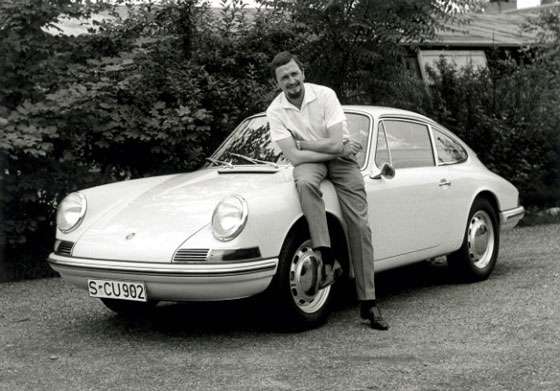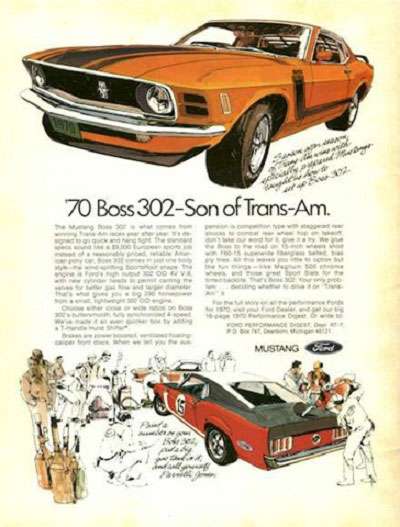Vodafone Live! How are you? (With Michael Schumacher and Rubens Barrichello)
Tags:
Automobilismo,
Celulares,
Dispositivos Móveis,
Fórmula 1,
Intervalo Comercial,
Michael Schumacher,
Propagandas com Pilotos,
Propagandas de Celulares,
Publicidade,
Rubens Gonçalves Barrichello,
Telefonia,
Vodafone
Publicado: sexta-feira, 6 de abril de 2012 às 17:30
Permalink:
Copiar
Link copiado para a área de transferência!
Houve um erro ao copiar o link para a área de transferência.
Como funciona o HANS (Head And Neck Support)
Jim Downing, depois de perder seu amigo, Patrick Jacquemart, em 1981, após um acidente enquanto testava um Renault 5 Turbo IMSA GTU em Mid-Ohio, pensou em criar um equipamento que protegesse o pescoço em acidentes automobilísticos.

O HANS, essencialmente, funciona como um airbag. No entanto, ao invés de inflar, usa um colar e duas tiras de poliéster para minimizar o movimento da cabeça do piloto em uma colisão frontal. Os cintos de segurança são colocados em cima do colar, segurando o HANS no lugar correto.

No entanto, Jim Downing não via as vendas do seu HANS decolarem, pois só havia vendido 250 unidades de seu produto, até o fatídico acidente de Dale Earnhardt, nas 500 Milhas de Daytona, em 2001, que resultou em sua morte. A colisão não foi forte, mas se ele não tivesse deixado sua marca registrada e estivesse usando um conjunto de capacete fechado e HANS, teria sobrevivido ao incidente.
Só na semana pós-acidente, foram comercializadas 250 unidades. Atualmente, a maioria das categorias do automobilismo exige o HANS como pré-requisito de segurança para os pilotos. Mais de 140 mil HANS foram vendidos até hoje.

Publicado: sexta-feira, 6 de abril de 2012 às 12:30
Permalink:
Copiar
Link copiado para a área de transferência!
Houve um erro ao copiar o link para a área de transferência.
Worst Firefighter Ever! Don't blame him, it's only 3/4 his fault that the fire started anyway.
Ferdinand Alexander Porsche (11/12/1935 - 05/04/2012)

Ferdinand Alexander continuou desenvolvendo carros de corrida para a montadora de Stuttgart até 1972, quando deixou a empresa, com outros parentes, depois que a Porsche se transformou em uma sociedade anônima. Fundou o Porsche Design Studio, especializado em desenhar relógios, óculos, canetas e até tênis, todos com estilo de linhas limpas e elegantes. Seu lema era que "o design precisa ser funcional e a funcionalidade deve ser implementada visualmente sem detalhes que precisam ser explicados".
Ferdinand Alexander Porsche também foi responsável por diversos produtos voltados ao universo masculino, como relógio de pulso e óculos, todos fazendo referência à marca automobilística de sua família.
"Como o criador do Porsche 911, ele estabeleceu uma cultura do design em nossa empresa que moldou nossos carros esportivos para o dia de hoje. Sua filosofia de bom design é um legado que certamente vamos honrar no futuro. Um bom design deve ser honesto. Um produto desenvolvido coerentemente não requer nenhum adorno", afirmou o CEO da Porsche, Matthias Müller.
Ferdinand Alexander Porsche dies
Stuttgart.
Dr. Ing. h.c. F. Porsche AG, Stuttgart, is mourning Professor Ferdinand Alexander Porsche. The Honorary President of the Supervisory Board died on 5 April 2012 in Salzburg, aged 76. Matthias Müller, President and Chief Executive Officer of Porsche AG, paid tribute to Ferdinand Alexander Porsche's services to the sports car manufacturer: "We mourn the death of our partner, Ferdinand Alexander Porsche. As the creator of the Porsche 911, he established a design culture in our company that has shaped our sports cars to this very day. His philosophy of good design is a legacy to us that we will honour for all time."
Ferdinand Alexander Porsche was born in Stuttgart on 11 December 1935, the oldest son of Dorothea and Ferry Porsche. Even his childhood was shaped by cars, and he spent much of his time in the engineering offices and development workshops of his grandfather Ferdinand Porsche. In 1943 the family accompanied the Porsche company's move to Austria, where he went to school in Zell am See. After returning to Stuttgart in 1950, he attended the private Waldorf school. After leaving school, he enrolled at the prestigious Ulm School of Design.
In 1958, F.A. Porsche, as he was known by his colleagues, joined the engineering office of what was then Dr. Ing. h.c. F. Porsche KG. He soon proved his great talent for design by sculpting the first model of a successor to the 356 model line out of plasticine. In 1962 he took over as head of the Porsche design studio, creating a worldwide furore one year later with the Porsche 901 (or 911). With the Porsche 911, F.A. Porsche created a sports car icon whose timeless and classical form survives to this very day in what is now the seventh 911 generation. However, in addition to passenger cars, F.A. Porsche also concerned himself with designing the sports cars of the 1960s. His best-known designs include the Type 804 Formula One racing car or the Porsche 904 Carrera GTS, now considered to be one of the most beautiful racing cars ever.
In the course of the conversion of Porsche KG into a joint-stock corporation in 1971/72, Ferdinand Alexander Porsche, along with all the other family members, stood down from the company's front-line business operations. In 1972 he founded the "Porsche Design Studio" in Stuttgart, the head office of which was relocated to Zell am See in Austria in 1974. In the decades that followed, he designed numerous classic gentlemen's accessories such as watches, spectacles and writing implements that achieved global recognition under the "Porsche Design" brand. In parallel, with his team, he designed a plethora of industrial products, household appliances and consumer durables for internationally renowned clients under the brand "Design by F.A. Porsche". A strong and clear design concept typifies all product designs created in his design studio to date. The credo of his design work was: "Design must be functional and functionality has to be translated visually into aesthetics, without gags that have to be explained first." F.A. Porsche: "A coherently designed product requires no adornment; it should be enhanced by its form alone." The design's appearance should be readily comprehensible and not detract from the product and its function. His conviction was: "Good design should be honest."
Ferdinand Alexander Porsche received numerous honours and awards both for his work as a designer as well as for individual designs. For example, in 1968 the "Comité Internationale de Promotion et de Prestige" honoured him for the outstanding aesthetic design of the Porsche 911 while the Industrial Forum Design Hannover (iF) voted him "Prizewinner of the Year" in 1992. In 1999, the President of Austria bestowed on him the title of Professor.
Ferdinand Alexander Porsche retained a close lifelong association with Porsche AG as a partner and member of the Supervisory Board. For example, even after stepping down from front-line business operations, he contributed to the design of Porsche's sports cars over many decades and repeatedly steered the company in the right di-rection. This was especially the case for the difficult period Porsche experienced at the beginning of the 1990s. From 1990 to 1993, F.A. Porsche served as President of the company's Supervisory Board, thus playing a major role in Porsche A.G's eco-nomic turnaround. In 2005, he stood down from his Supervisory Board role in favour of his son Oliver and assumed the mantle of Honorary President of the Supervisory Board.
Ferdinand Alexander Porsche will be buried in the family grave at Schüttgut in Zell am See, attended by his immediate family. An official funeral service will be held in Stuttgart at a later date.
Publicado: quinta-feira, 5 de abril de 2012 às 21:21
Permalink:
Copiar
Link copiado para a área de transferência!
Houve um erro ao copiar o link para a área de transferência.
1970 Ford Mustang Boss 302. Son of Trans-Am.

Tags:
Carros,
Ford,
Propagandas de Carros,
Publicidade
Publicado: quinta-feira, 5 de abril de 2012 às 17:14
Permalink:
Copiar
Link copiado para a área de transferência!
Houve um erro ao copiar o link para a área de transferência.
Richard Hammond drives Ford Mustang GT500
Tags:
British Broadcasting Corporation (BBC),
Carros,
Ford,
Richard Mark Hammond,
Televisão,
Top Gear,
Top Gear UK
Publicado: quinta-feira, 5 de abril de 2012 às 12:17
Permalink:
Copiar
Link copiado para a área de transferência!
Houve um erro ao copiar o link para a área de transferência.
Assinar:
Postagens (Atom)
